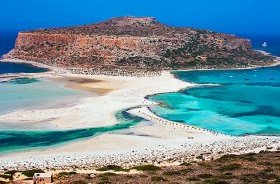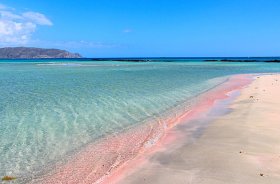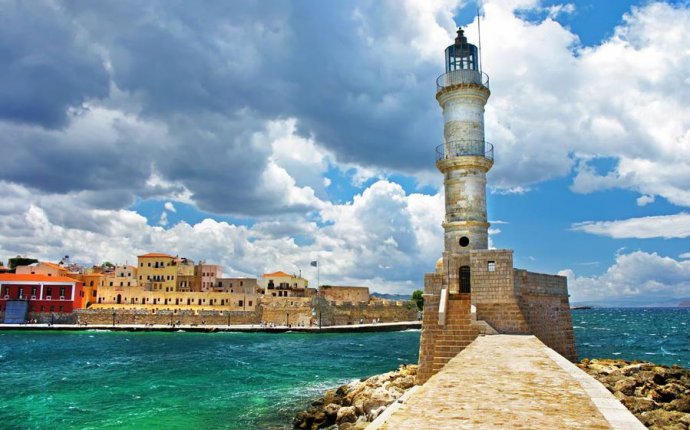
Chania Greece Attractions
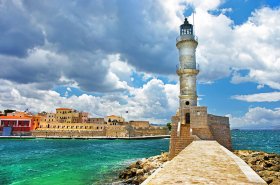
1 Old Harbor
Chania's historic importance stemmed from its location as a port, and still today, the deep, curving harbor, which gained its present appearance under the Venetians in the 14th century, is its main tourist attraction. Filled with wooden fishing boats and ringed by a promenade lined with seafood eateries and cafés, it buzzes with visitors in summer, and is totally enchanting by night. To the east of the old harbor, note the mosque, erected by the Ottoman Turks after they took Chania in 1645. Beyond the mosque, stand the arsenals, where the Venetians repaired their galleys, and a yachting marina. This entire stretch of coast is protected by a breakwater, and on its tip stands a lighthouse - it was designed by an Egyptian architect in 1839 and is strangely reminiscent of a minaret.
2 Maritime Museum of Crete
This museum traces Crete's centuries-old relationship with the sea, from the Minoans, through the Byzantine, Venetian, and Turkish periods, to arrive at the German invasion of the island during WWII. Spread over two floors, the collection includes video presentations, amazing models of ships, paintings, photos, and nautical equipment. You'll find it at the western corner of the old harbor, in a lovely red building constructed by the Venetians and used as a prison. Note that at the Moro dock, in one of the Venetian arsenals east of the old harbor, you can also see the Minoa, a reconstructed 15th_century-BC Minoan ship.
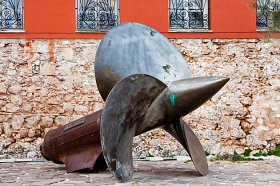 Address: Fort Firkas, Akti Koundourioti, 73136 Chania, Crete
Address: Fort Firkas, Akti Koundourioti, 73136 Chania, Crete
3 Archaeological Museum
Chania's history dates back millennia to somewhere around 2200 BC, when the Minoans founded the ancient city-state of Kydonia on this same spot. Housed in the Gothic Church of San Francesco, a light and airy vaulted space (built by the Venetians and later used as a mosque by Turks), this museum holds archeological finds from western Crete dating from Neolithic times through to the Roman era. There's a wealth of Minoan ceramics, painted burial urns, gold jewelry, and clay tablets with inscriptions. Other notable exhibits include peculiar clay figurines of bird-faced women, votive ceramic bulls, a third-century Roman mosaic floor, and an impressive marble bust of Roman Emperor Hadrian.
Address: 21 Halidon Street, 73136 Chania, Crete
4 Botanic Park & Gardens of Crete
Botanic Park & Gardens of Crete
With its warm, sunny climate and rich, fertile soils, Crete grows olives and grapes, and even farms tropical fruits, such as avocados and bananas. In this carefully tended park, at the foot of the White Mountains, a meandering two-kilometer path takes you through a garden planted with exotic flowers and fruit trees from all over the world, with everything clearly labeled. There are plenty of shady spots with benches amid fragrant herbs such as sage, mint, and thyme. You can borrow a walking stick and hat at the entrance, and a free bottle of water is included with the ticket. There's also a café-restaurant serving traditional Cretan dishes prepared from the park's own seasonal products.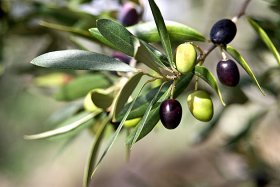 It's accessible by bus from Chania and is a must for plant lovers.
It's accessible by bus from Chania and is a must for plant lovers.
Address: Fournes, 18 km southwest of Chania, Crete
5 The Monasteries of Akrotiri Peninsula
The Monasteries of Akrotiri Peninsula
The rocky peninsula of Akrotiri, 10 kilometers east of Chania, is home to three monasteries. Agia Triada, founded in 1612, is set amid meticulously tended olive groves and orange orchards, and centers on a cloistered courtyard and a lovely church - you can buy olive oil made by the monks. A short drive away stands the fortress-like Gouverneto, founded in 1537. Even if the monastery is closed, the location is beautiful. From here, a footpath leads past Arkoudiospilia (Bear Cave), down 140 steps to Katholiko, an abandoned sixth-century monastery, built into a cliff face. After seeing the monasteries, head for Stavros Bay for a swim at the sandy beach where Anthony Quinn danced in the 1964 film Zorba the Greek.
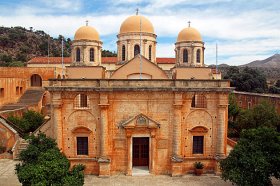 Balos
Balos
Crete's most spectacular beaches are often the hardest to reach, and Balos is certainly one of them. Excursion boats depart from Kissamos (40 kilometers west of Chania), but it's more fun to hire a vehicle, preferably a 4x4 jeep, and visit independently. You'll need to negotiate a challenging seven-kilometer rough track, running along Gramvousa Peninsula - be sure to go slowly and carefully. From the car park, hike down a steep footpath (20 minutes), to arrive at this enchanting white sand beach, which extends to a stunning turquoise and emerald-green lagoon. From here, you can wade through knee-high sea to the tiny islet of Gramvousa, crowned by a 16th-century Venetian fort. The beach is blissful after 5pm, when the excursion boats leave, and you're at one with nature. Prince Charles and Princess Diana swam here during their honeymoon in 1981.
7 Elafonissi
On Crete's isolated southwest coast, this stunning beach lies about a two-hour drive from Chania (73 kilometers). The colors here are amazing - the sand takes on pink hues in certain light as it is made up of tiny pieces of shells and coral, and the sea is turquoise-blue. You can wade through ankle-deep water to an islet, which is a conservation area, being the last stop for birds migrating from Europe to Africa. Complete with sunbeds and umbrellas to hire plus a canteen for snacks, Elafonissi is ideal for families with kids due to the warm, shallow sea. It does get very busy, but most day trippers leave at 4pm, after which it is blissfully quiet.
Samaria Gorge
Crete's mountains are cut by deep gorges, the longest of which is the 18-kilometer Samaria. It makes a challenging hike, which you can do independently or as part of an organised excursion. Entrance to the gorge is at the village of Omalós, 42 kilometers south of Chania. The path is steep and uneven at first, descending through dense pinewoods. Deep inside the rocky gorge, the footpath winds around large boulders, and at its narrowest point, the "Iron Gates" (Síderoportes), the Samaria is only four meters wide. Look out for kri kri, wild goats unique to Crete. Also, be sure to wear stout footwear and carry plenty of water. The gorge opens out to the sea at the village of Ayía Rouméli, with a black sand beach where you can swim. From here, catch the ferry to Sfakia, then the bus back to Chania (75 kilometers).
